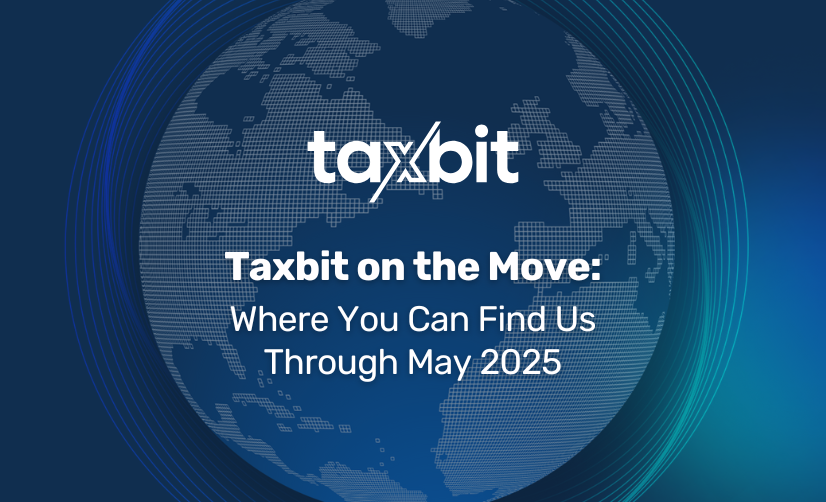Some aspects of the Jarretts’ argument could undermine the broader acceptance of crypto, distributed ledger technology, and DeFi.
When news broke that the IRS conceded a lawsuit filed by a Tennessee couple the Jarretts, social media and other news outlets were ablaze with commentary about the apparent victory for the cryptocurrency community. The Jarretts case related to a refund of approximately $4,000 in taxes paid on coins received for staking on the Tezos network.
Shortly after, legal and tax experts weighed in, calmed the waters, and explained the concession wasn’t as big of a victory as it initially appeared to be.
Unless the IRS makes an express statement about the matter, it’s unlikely the concession means anything at all.
Although it was intended to bring the current case to an end without a definitive resolution, the case still isn’t over. And both parties have continued to file various documents to persuade the court about whether it’s appropriate to dismiss.
What is the current status of the Tezos refund suit?
Since news of the IRS’s proposed concession went public, the Department of Justice (DOJ) have filed a motion to dismiss the case on grounds that the issuance of the refund rendered the litigation moot.
As expected, the Jarretts, backed by the Proof of Stake Alliance (POSA), objected to the dismissal.
They contend the issue at hand—treatment of staking rewards–will come up again in subsequent tax years, so it’s not actually moot. The Jarretts are now seeking to amend the original complaint to include a new issue, beyond just the refund, to seek relief from the court on possible future tax impacts caused by this issue.
In addition to the back and forth between the DOJ and the Jarretts, Coin Center, a crypto policy think tank, has also attempted to enter the fray by filing a motion of its own; the non-profit is seeking permission from the court to file its own legal brief and argue against dismissal of the case in support of the Jarrett’s position.
The court hasn’t yet ruled on any of these filings.
What type of staking is at issue in the Tezos refund case?
Staking is a term used in a variety of ways. It describes activity on decentralized finance (DeFi) protocols or when units are delegated from inside a wallet. However, neither of these relate to the case.
In the legal complaint filed by the Jarretts, the staking at issue relates to the operation of a validation node on the Tezos network—a process known as baking. Distinguishing this activity from other types of staking activity is important.
The legal argument made by the Jarretts relates specifically to the newly-minted tez (XTZ) the couple received as a result of baking.
Neither staking on a DeFi protocol, nor delegating coins held in a wallet to others operating a validation node, directly result in the creation and receipt of new coins by the user. In both cases, the user is simply receiving a contractual return, known commonly as a yield, paid by someone else for use of the units.
Even if the couple, and the POSA, ultimately prevail, the victory is limited to individuals operating a validation node on a proof-of-stake (PoS) protocol.
Extension of that victory to other types of staking wouldn’t be warranted.
What tax treatment are the Jarretts seeking?
Under the legal theory argued by the Jarretts, the receipt of the new coins wouldn’t be taxed right away; the tax would be paid at a later date when those same units were sold. This is akin to the tax treatment for someone that paints a painting or writes a book—the newly-created property isn’t taxed until it’s disposed of.
However, the Jarretts don’t articulate how those self-created units would be treated for tax purposes when they are ultimately sold.
Generally, when self-created property such as a painting or book ultimately is sold, it’s treated as the sale of stock in trade or inventory and taxed as ordinary income. This means the self-created crypto units wouldn’t be taxed as a capital asset under the tax code like crypto typically is; they’ll be treated as inventory and the amount received will be taxed as ordinary income.
The Jarretts proposed tax treatment may actually be less favorable than the current approach taken by the IRS.
What is the IRS guidance on crypto staking?
There’s no specific IRS guidance on staking. However, the IRS has issued guidance on mining that would result in similar tax implications for staking because of the similarity between the two activities.
If you follow and apply IRS Notice 2014-21, the guidance on mining income, a staking reward is taxable as ordinary income at its fair market value on the date the reward units are received.
In the Jarretts’ case, they would be required to include the value of the coins received as income when they were received. The amount reported as income would then establish a cost basis for the coins and be applied against proceeds received from their future disposition to reduce capital gain.
Notably, under the IRS’s approach, after paying tax upon receipt of the new coins, the coins would likely be treated as capital assets in the hands of the Jarretts—they might be subject to a lower tax rate when they’re disposed of if they’re held longer than a year.
What are the possible tax outcomes of the Jarretts’ case?
Based on the court filings, the Jarretts received 8,876 new tez during 2019 with a total value of $9,407. Following the IRS’s approach, the Jarretts paid tax of $3,293 on those units—an effective tax rate of roughly 35%.
Imagine the Jarretts sold those units on January 31, 2022; they would have received proceeds of $29,468 at an average price of $3.32 per coin. Based on the IRS approach, they obtained a cost basis of $9,407 on the amount reported as income in 2019. This would have resulted in net capital gain of $20,061 on the sale. The gain would likely be taxed at the preferential tax rate of 15% resulting in $3,009 in tax due.
Overall, under the IRS’s view, the Jarretts would owe a total of $6,302 in tax on the activity—the initial $3,293 of income tax paid in 2019 and the hypothetical $3,009 in tax on the capital gain in 2022.
Under the Jarretts’ view, they wouldn’t have paid taxes on the coins back in 2019. Assuming the Jarretts sold them on January 31, 2022, that sale would have resulted in income of $29,468. They would end up with a tax bill of $10,314 using the same effective tax rate of 35% for ordinary income that the Jarretts paid in 2019.
Under this approach, the Jarretts actually pay $4,012—approximately 64% more in income taxes on the same activity.
The Jarretts’ argument for more favorable tax treatment of staking rewards might not be as favorable as it seems.
Additional considerations
The example above has a few caveats.
Tez has essentially tripled in value since 2019. If it had lost value, the Jarretts’ approach may have been more favorable to the taxpayer.
By deferring the tax until 2022, the Jarretts didn’t need to pay tax on units they hadn’t sold yet back in 2019. Tax payments require cash, and many crypto users prefer to avoid selling their crypto. Deferring taxes in order to avoid selling crypto is wise, but might not be worth it if the tax bill doubles as a result.
How could the Jarretts’ argument have negative implications on practical tax reporting?
At the IRS, the administrative burden of tax reporting is often at the forefront of every discussion. The Jarretts’ approach could make the administrative burden even worse.
Crypto is typically held as a capital asset for tax purposes. When it’s disposed of, you’ll calculate gain or loss based upon proceeds received against the cost basis of the units. All your crypto is in the same capital asset category and various accounting methods such as First-In, First-Out (FIFO) or Specific Identification can be applied to minimize taxes.
To read more about crypto tax treatment, go in depth with our Crypto Tax Guide.
Inventory vs. Capital Assets
Under the Jarretts’ approach, the tez they received from baking wouldn’t be a capital asset, it would be inventory. They would need to track the units of inventory tez separate from their capital asset tez so the proper tax calculation could be completed for each. Given the fungible nature of crypto, it won’t be easy to track two different categories of tez if they get commingled in a single wallet or account.
Moreover, it’s not clear if the IRS guidance regarding FIFO and Specific Identification would apply to the inventory tez. A note at the top of the FAQ on virtual currency states, “Except as otherwise noted, these FAQs apply only to taxpayers who hold virtual currency as a capital asset.” The tax code has other rules for inventory accounting.
How does the Jarretts’ argument impact the concept of autonomous protocols in financial transactions?
Some aspects of their argument may also undermine the broader acceptance of crypto, distributed ledger technology, and DeFi.
The Jarretts’ argument turns on the premise that they created the newly-minted coins received as a result of baking a block, and the Tezos network itself didn’t create the coins.
The coin generation aspect of the protocol is part of the network’s core architecture. The Jarretts’ baking node didn’t change or alter that part of the protocol architecture in any way; it only completed a task, which resulted in the minting of new coins under parameters prescribed by the protocol.
Their position makes sense given an autonomous protocol doesn’t fit into our traditional understanding of a person or entity that’s involved in a financial or taxable transaction. But with the increase in decentralized protocols and decentralized autonomous organizations (DAOs), the concept of autonomous protocols as parties to financial transactions is changing. If the Jarretts’ case or some other case on the issue went to trial, it’s difficult to imagine a ruling from the court that doesn’t touch on the question of whether a protocol itself could have created the coins.
Final thoughts
The Jarretts’ argument has merit but, if accepted, it may have a broader impact on the mainstream acceptance of DeFi.
Currently, its most pressing issue is how DeFi can be governed by an adequate regulatory framework because its decentralized and autonomous nature undermines the historical premise that regulations can only be applied to a person or entity.
The Jarretts’ argument, by discounting the role the Tezos network protocol itself plays in the creation of new tez, seems to play deeper into the premise that autonomous protocols can’t be a party to a transaction and are, thus, beyond the scope of existing laws and regulations.
What appears to be a victory in the Jarretts’ case may cost users more taxes and headaches in the future.
Worse yet, it could jeopardize the entire ecosystem by reinforcing archaic notions of who or what can be a party or actor in a transaction. In the wake of the IRS’s concession, it’s worth pausing to contemplate next steps and consider more than just a near-term, favorable tax treatment.
About TaxBit
Keeping up with all the paperwork and reporting regulations for digital asset transactions can be laborious and time-consuming. The more complex your crypto portfolio becomes, the more complicated your tax liabilities can get.
TaxBit helps track your crypto transactions and fills out your tax forms automatically.
We also recognize the need to support your DeFi activity, and each day we’re actively working on expanding DeFi support to popular blockchains.
The initial version of our DeFi support allows you to sync in any transfers, trades, and approvals you’ve made on a DeFi platform involving ERC-20 tokens on the Ethereum network, or BEP-20 tokens on the Binance Smart Chain network.
Ready to try out the updates for yourself? Create an account or login to start.








